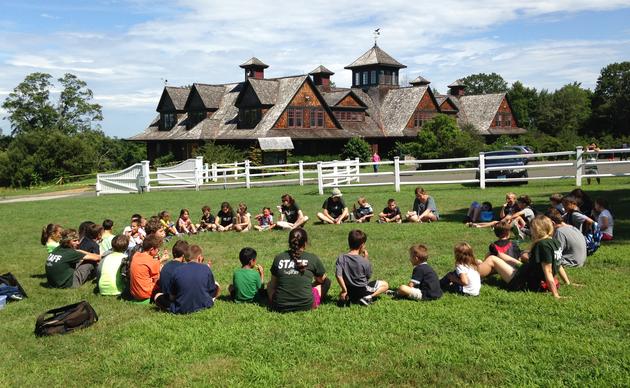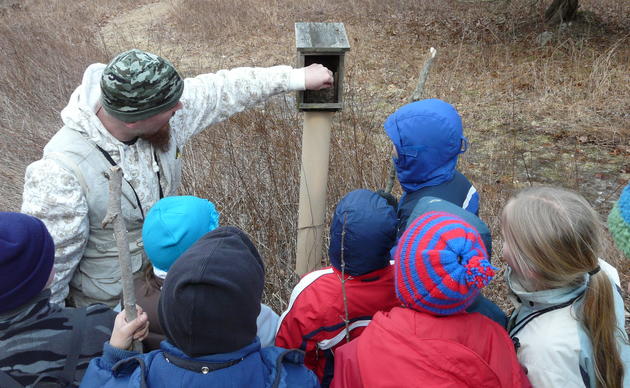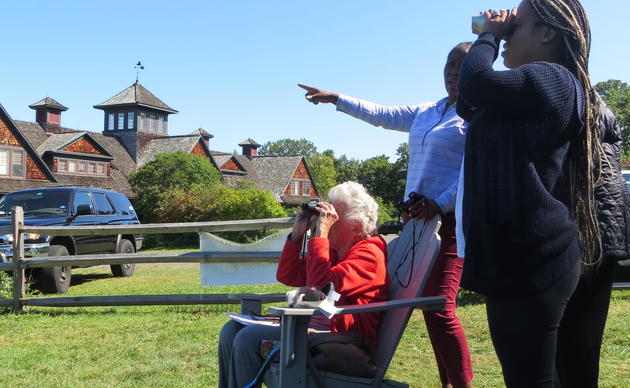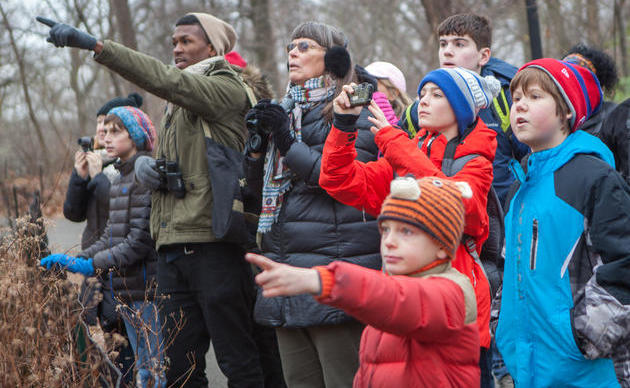Directions
Opened in 2003, the Kimberlin Nature Education Center is the building at the heart of the Greenwich Audubon Center. Built with environmentally friendly materials and techniques, it is the main welcome center and an active hub for conservation events, exhibits, classrooms, and the center and Audubon Connecticut staff offices.
Hilfiger Children's Learning Center: Our main building is also home to the Hilfiger Children’s Learning Center—an indoor, hands-on area with nature-themed activities, natural history exhibits, puppet theater, story corner, live animals, and a wildlife observation window. This play space is not only ideal for families with younger children, but is also enjoyed by visitors of all ages for its views and nature exhibits.
Other Attractions Include: The Perch Coffee Lounge and The Nature Store, which offers a selection bird feeders, nest boxes, field guides, and more.
The Kimberlin Nature Education Center's “green” design features include:
- Recycled fiberglass window frames
- Recycled plastic to construct outdoor decks
- Beams made of recycled steel
- Recycled gypsum wallboard
- Insulation made from recycled paper
- 100% wool carpeting
- Flooring, shingles, and other lumber certified to be from sources utilizing conservation forestry practices
- Cement and asphalt paving replaced with gravel or crushed stone, allowing rainwater to infiltrate and recharge groundwater
- Geothermal HVAC system
The biggest payoff is the geothermal heating and cooling system. Conventional systems heat air with electricity or by burning natural gas when outside air is coldest. Conventional summer systems cool air when it is hottest, using electrical refrigeration. These methods of cooling and heating are expensive and contribute to global warming.
At the Greenwich Audubon Center, the earth heats itself and cools the building, taking advantage of the constant year-round temperature (about 54 degrees) of the ground 4 feet or more beneath the surface. A liquid—chemically similar to antifreeze—is pumped underground into a grouping of pipes (made from recycled plastic). Liquid colder than 54 degrees is warmed, and liquid hotter than 54 degrees is cooled, both by the surrounding earth. The heated or cooled liquid (depending on the season) passes through the closed loop into the building, which it heats or cools as needed. That precise need is determined by computer-operated controls.
The energy for changing the temperature comes from the sun-warmed earth, and it is free. The only added energy is electricity to circulate the liquid and run the heat pump.
Help make the world a better place
Learn & Explore
Where birds thrive, people prosper. Help us transform local communities into places where birds flourish. Learn what you can do to nurture wildlife, nature, and conservation in Connecticut.
Support Our Work
Through land stewardship, science, education, and advocacy, we work to preserve habitat and protect bird species that are of state, national, and global concern. Your gift can make a difference.
Join Our Family
When you become a member of Greenwich Audubon Center, you are nurturing bird-friendly communities and a natural heritage for generations to come. Help us do great things.






